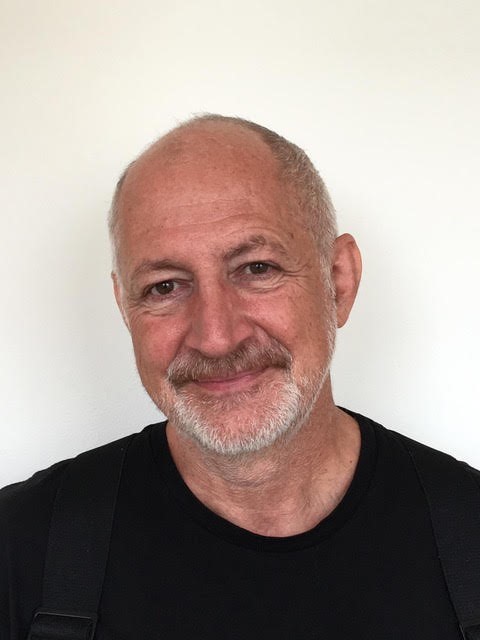Joel Bleifuss
The Many Voices of Peace Studies: Celebrating 50 Years
Joel Bleifuss
Joel Bleifuss, editor and publisher of In These Times, a Chicago-based, independent, nonprofit national magazine that covers progressive political movements, was the first full-time paid director of MU’s Peace Studies Program from 1980-1982.
Beginning at age 24, he taught Peace Studies 50 – Introduction to Peace Studies – which was the only class unique to the program, as Peace Studies otherwise consisted of cross-listed classes as part of an interdisciplinary program. Lecturers came from departments as diverse as English, sociology, political science, history, anthropology and art history. ….
“With Peace Studies, you have two different approaches,” Bleifuss says. “Or at least that’s the way it was back then. There were those people who thought Peace Studies should be its own department, its own field of study. And there were others who believed it was inherently interdisciplinary. I followed the later view.
“We looked at the issue of war and peace from a perspective of all the different fields – so it was a rotating group of guest lecturers.”
Commonality Despite Differences
His course was limited to about 30 students each semester and filled quickly – many students from diverse backgrounds and classes. “For example, we had sort of working-class hillbillies in the class, as well as wealthy suburban St. Louis kids. So, there wasn’t a typical Peace Studies student.
“But there was a commonality – they had an interest in politics or an interest in policy – and an interest in how government functions.”
His was the only official Peace Studies class at the time, though with other cross-listed courses, students could earn a major in Peace Studies. While he was there, only one student majored in Peace Studies, though more were involved through the interdisciplinary side of the program.
“It wasn’t a program we advertised,” Bleifuss explains. “I think we saw it as a course that students, if interested in the subject, would take.”
Activism Leads the Way
Bleifuss originally got involved with Peace Studies with his activism efforts. He founded the local chapter of the Democratic Socialist Organizing Committee, which was a precursor to the Democrat Socialists of America (DSA). He also was active in the local Democratic Party.
In addition, he was involved in the Nuclear Freeze campaign against nuclear weapons and was a vibrant presence in Boone County politics.
“Back in the late ’70s, I was very involved with the anti-draft movement active in Columbia,” Bleifuss adds. “We stood in front of the Post Office every Saturday morning protesting against the draft, and then against militarism – and so it was through that group of people, many of whom were involved with the Quaker meeting in Columbia, that I got to know the leaders of the Peace Studies program in Columbia.”
Bleifuss applied for his conscientious objector status, which he learned about in high school from John Schuster, an activist, cardiologist, and Quaker who counseled individuals thinking of becoming conscientious objectors.
Bleifuss was among approximately 170,000 individuals whose personal beliefs were incompatible with military service. These conscientious objectors faced criminal prosecution for their beliefs. Going to college was one way to avoid the draft.
Bleifuss met Schuster in person while at the University of Missouri through different meetings and shared views on politics. Schuster was a big inspiration in Bleifuss’ life and became his mentor – even before he became director of the Peace Studies program, which had been established loosely in 1971.
Through this involvement, Bleifuss, who had a BA in political science from the University of Missouri, was asked to be director in December 1979 and taught his first class under the official program in May 1980. He made about $9,300 a year in doing so. He had no staff. His paycheck and program were funded through a grant from now deceased Charlie Atkins, a prominent business leader in Columbia, and individual gifts from a community of donors..
“I sort of established the program,” Bleifuss says. “It became more institutionalized at that time rather than ad hoc. It had a more developed course structure, and we had more programing, so it raised its profile. We had a lot of public programming – events, speakers, movies. A big part was community outreach and programming for the university community.”
At that time, to pay for speakers, Bleifuss would go from department to department asking for money to bring big names such as Ralph Nader, an American activist, and Maggie Kuhn, the head of the Gray Panthers.
Questioning is Good!
“I think a part of Peace Studies was to question how we related to each other as people and also nations. There are many different facets to it. And so, I think the interdisciplinary approach was similar to this idea that you get a more complete picture of something if you look at it from many different angles. That was unique to a university class at that time. This was the beginning of interdisciplinary studies within the university and the larger university community.”
It was also the beginning of Peace Studies programs nationwide. Except for a few offered in Quaker-affiliated schools, few existed.
Bleifuss credits Peace Studies for his current career in a national political magazine, where he has been for 35 years. “My education, activism and Peace Studies experiences at the University of Missouri prepared me for my current work, and my political involvement. All this helped lead to my employment at In These Times.”
So, would he do it again? “Certainly,” he says.
